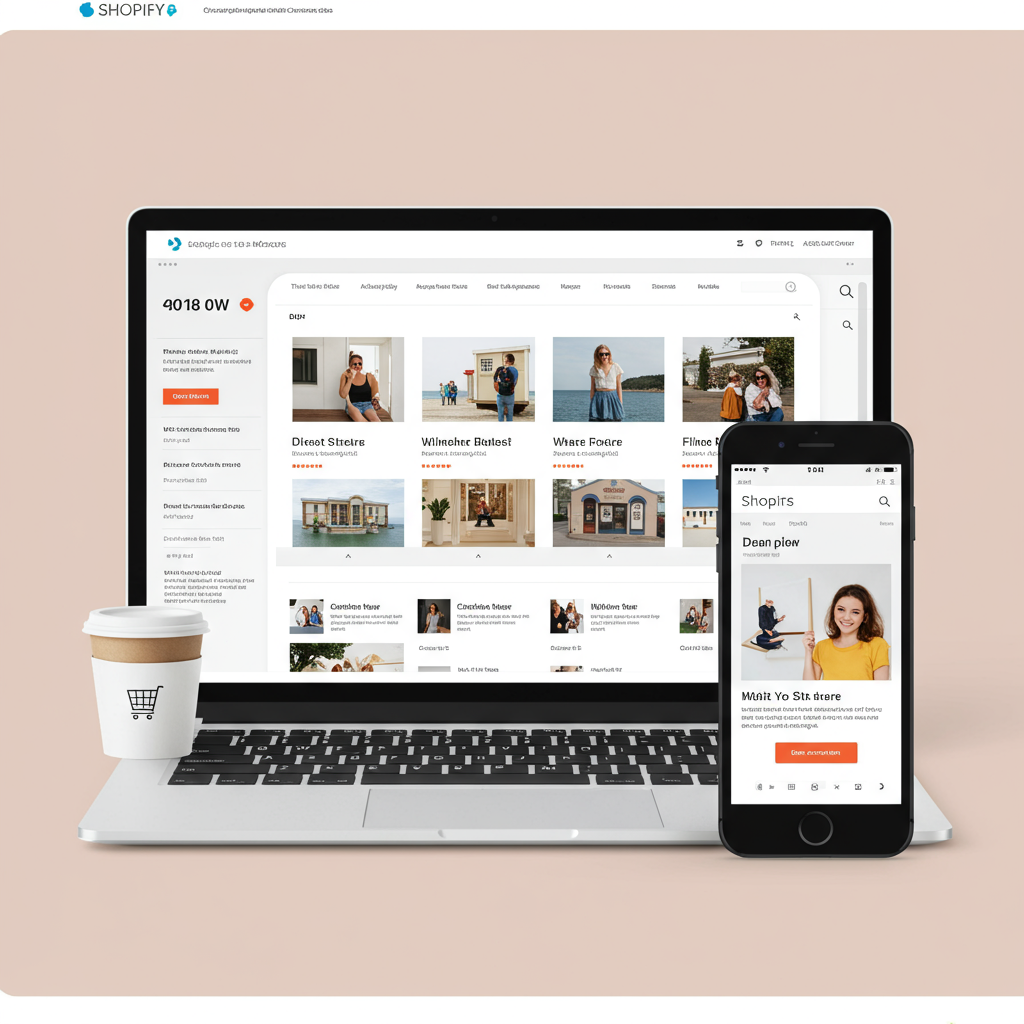Transforming your online storefront into a conversion powerhouse for the modern shopper.
As a merchant, I know you’re constantly looking for ways to stand out in the crowded e-commerce landscape. Your Shopify homepage isn’t just a digital storefront; it’s the virtual front door to your brand, often the very first impression a potential customer gets.
For 2025, the expectations of online shoppers are higher than ever. They demand speed, personalization, and an intuitive experience that feels tailored just for them.
That’s why I’ve put together these essential tips to help you optimize your Shopify homepage, ensuring it not only looks fantastic but also converts visitors into loyal customers.
First and foremost, let’s talk about **mobile-first design**. This isn’t a new concept, but its importance continues to grow exponentially. The vast majority of online browsing and purchasing now happens on mobile devices.
When I design a homepage, I always start by thinking about how it will appear and function on a smartphone. Is the text legible? Are the buttons easy to tap? Does the layout flow naturally?
Shopify’s themes are generally responsive, but it’s crucial to test your specific content and apps across various devices. Use Shopify’s theme customizer to preview mobile views, and don’t hesitate to use real devices for testing.
Next up is **site speed and performance**. In 2025, slow loading times are a death knell for conversions. Google’s Core Web Vitals are more critical than ever for SEO and user experience.
I recommend regularly checking your site speed using tools like Google PageSpeed Insights or GTmetrix. Optimize your images, minimize app usage, and consider a CDN (Content Delivery Network) if you have a global audience.
**Personalization** is no longer a luxury; it’s an expectation. Imagine a homepage that dynamically adjusts based on a visitor’s past behavior, location, or even the referral source.
Shopify apps can help you implement this, showing recently viewed products, personalized recommendations, or even custom banners for returning customers. This makes the shopping experience feel incredibly relevant.
**Visual storytelling** is paramount. High-quality imagery and video are non-negotiable. Your products should be showcased beautifully, with clear, compelling visuals that convey their value and appeal.
I advise investing in professional product photography and considering short, engaging videos that demonstrate products in use. A hero video on your homepage can significantly boost engagement.
Your **Call-to-Actions (CTAs)** must be crystal clear and strategically placed. What do you want visitors to do? “Shop Now,” “Discover Our Collection,” “Learn More” – these should stand out and guide the user effortlessly.
Don’t overwhelm your visitors with too many CTAs. I find it best to focus on one primary action per section, making it easy for them to navigate their journey.
Building **trust and credibility** is vital. Display customer reviews, testimonials, security badges, and clear contact information prominently. Social proof is incredibly powerful.
I often place a dedicated section for customer reviews or a star rating aggregate near the top of the homepage. This immediately reassures new visitors.
**Accessibility** is not just a legal requirement; it’s good business. Ensure your homepage is usable by everyone, including those with disabilities. This means proper alt text for images, sufficient color contrast, and keyboard navigation.
A well-designed homepage prioritizes **user experience (UX)** above all else. Is it intuitive? Can visitors find what they’re looking for quickly? Is the navigation logical?
I constantly put myself in the shoes of a first-time visitor. If I can’t find key information within a few seconds, then the UX needs improvement.
For brands with a strong ethical stance, **sustainability and ethical messaging** can be a powerful differentiator. If your brand has a story about its sourcing, production, or community involvement, share it on your homepage.
This resonates deeply with conscious consumers in 2025 and helps build a stronger connection with your audience. I believe transparency builds loyalty.
Consider adding **interactive elements** like quizzes (“Find Your Perfect Product”), product configurators, or even simple polls. These can increase engagement and help guide customers to the right products.
**Seamless navigation** isn’t just about your main menu. Think about internal links, breadcrumbs, and a robust search bar. Your homepage should act as a hub, directing traffic efficiently to product pages, collections, and key information.
Don’t forget **Search Engine Optimization (SEO)**. While much of SEO happens behind the scenes, your homepage content, meta descriptions, and image alt text play a role. Use relevant keywords naturally within your copy.
Finally, **A/B testing** is your best friend. Don’t just set it and forget it. Continuously test different headlines, images, CTA button colors, and layout variations to see what resonates best with your audience.
I always tell merchants that optimization is an ongoing process, not a one-time task. The data from A/B tests provides invaluable insights into what truly drives conversions.
Shopify’s robust ecosystem of apps makes implementing many of these tips easier than ever. From speed optimization apps to personalization tools and advanced analytics, there’s likely a solution for your specific needs.
Looking ahead, I anticipate even greater integration of AI for hyper-personalization and predictive analytics directly on the homepage. Staying agile and open to new technologies will be key.
By focusing on these principles – mobile-first, speed, personalization, compelling visuals, clear CTAs, and trust – you’ll be well on your way to a Shopify homepage that not only looks great but also performs exceptionally in 2025 and beyond.
I’ve shared my insights, but I’m curious: what are your thoughts on these Shopify homepage design tips for 2025? Do you have any strategies that have worked particularly well for your store?






